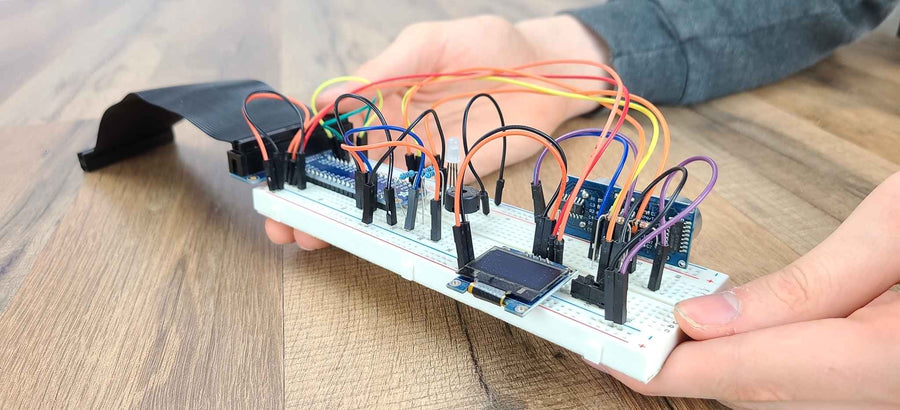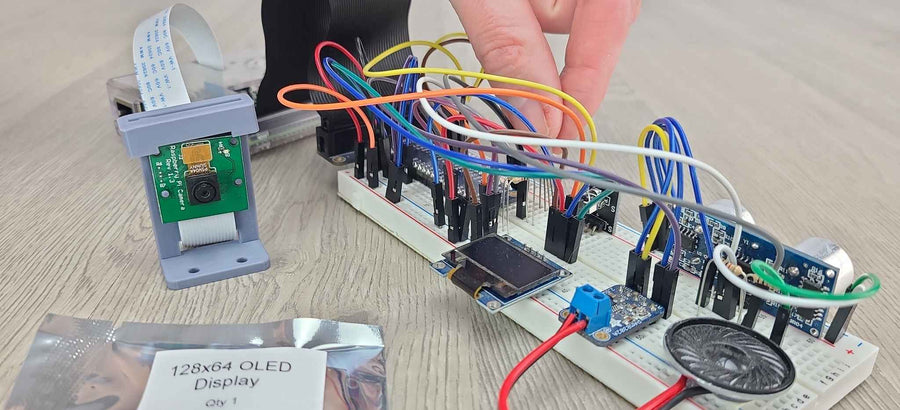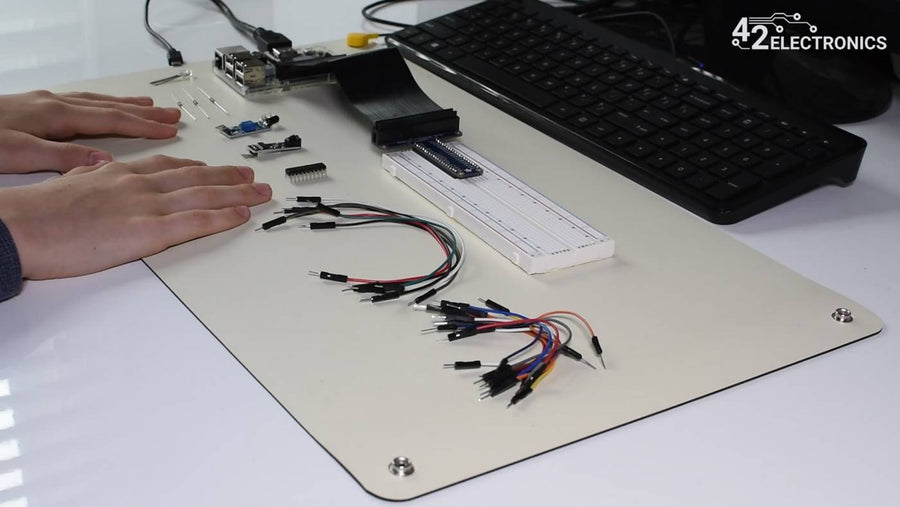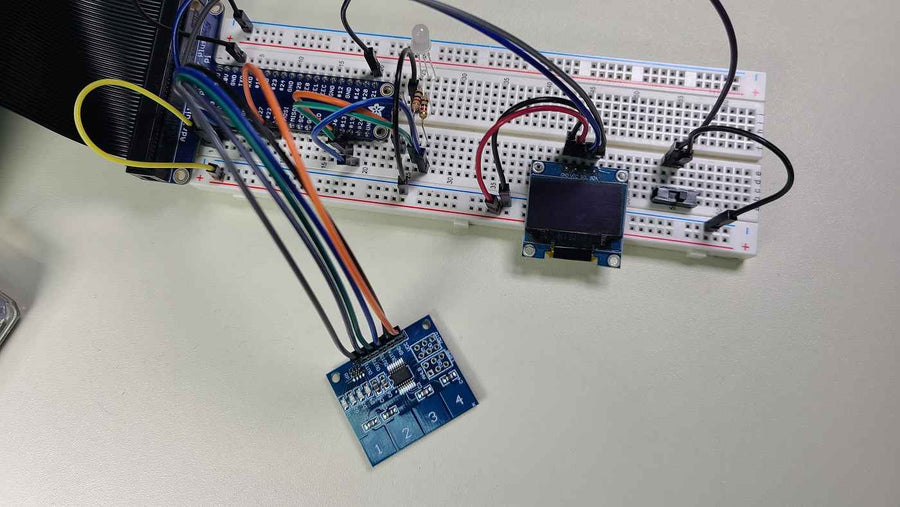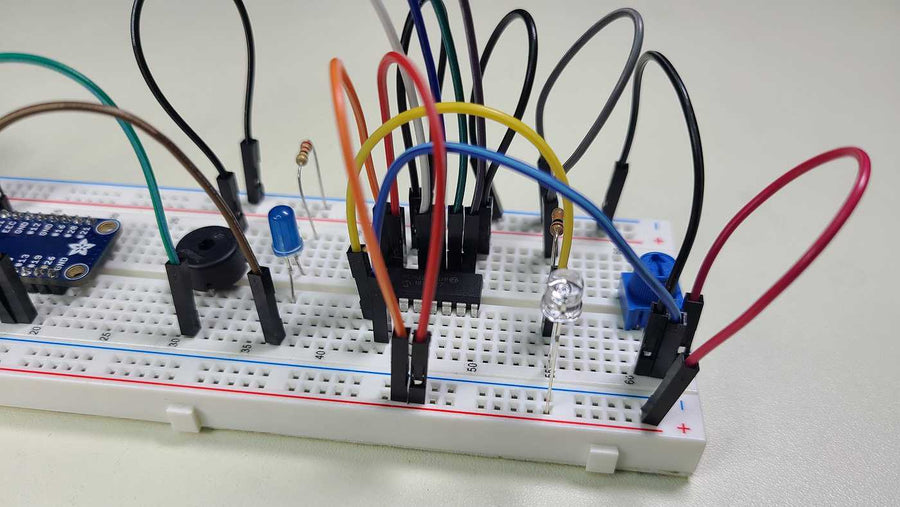Level B
What Will You Learn in the Electronics + Coding Standard Course?
This course is designed to start at the very beginning to systematically teach you to work with electronic components, use a Raspberry Pi, and write Python code. We then move on to teach you to work with a number of sensors as well as intermediate-level Python code commands.
What Will You Learn in the Raspberry Pi + Python Complete Course?
This course is designed to start at the very beginning to systematically teach you to work with electronic components, use a Raspberry Pi, and write Python code. We then move on to teach you to work with increasingly complex electronic components as well as both intermediate and advanced-level Python code commands.
Building a Level Shifting Circuit
The Raspberry Pi does not have the capability to input or output analog signals using its GPIO pins so in Lesson B-13 we teach you to build a level shifting circuit. The 74LVC245 integrated circuit is an 8-channel level shifter, included in the Level B kit, that is capable of level shifting 8 signals at once.
Using a Capacitive Touch Sensor
The Capacitive Touch Sensor (CTS) in the Intro to Robotics Level B kit measures the capacitance of four touchpads, and will toggle four output lines high or low based on which pads are being touched. Using a capacitive touch sensor in your electronics projects is covered in Intro to Robotics Lesson B-17.
Potentiometer: A Variable Resistor
Variable resistors have a rotary knob or slider that changes their internal resistance when a user moves the knob or slider. They are commonly used in audio equipment for volume control. They can be used any time user input needs to be measured so it can be processed by a circuit or program.
Adding a Light Sensor to Your Projects
Phototransistors can be used to create analog voltage levels to indicate the amount of light the device is sensing. Due to their sensitivity, these measurements can be very accurate, allowing your circuit or program to respond to various light levels with different behavior.
Using a 3x4 Matrix-Style Keypad
The Intro to Robotics Level B kit contains a 3x4 matrix-style keypad and we teach you to use it in Lesson B-7. The matrix keypad supplied in your kit has 7 wires exiting the keypad that connect to the rows and columns. Each row and column has its own connection.
What are Capacitors?
In electronic circuits, capacitors are used to quickly store and discharge energy into other components. Capacitors store energy by using two foil plates separated by an insulating material like paper or plastic. Lesson B-17 in the Intro to Robotics program teaches you how capacitors work and how to use them safely in electronics circuits.
Using RFID in Your Projects
RFID stands for radio-frequency identification and they operate using readers and tags. The reader contains a radio transmitter and receiver, commonly referred to as a transceiver, as well as other circuitry to decode signals received from scanned tags. The reader is always broadcasting radio signals and waiting to hear back from a tag.
Switch Bounce
When designing electrical circuits containing switches, it is important to account for and correct for switch bounce. Switch bounce is the microscopic movement which can result in the switch being open and closed very quickly, typically less than one millisecond, until the switch settles into the desired state.
What Will You Learn in Level B?
Level B takes your electronics and coding skills to the next level by teaching you to incorporate a wide variety of sensors into your projects as well as write intermediate-level Python code. Many of the sensors you will learn to use in Level B will be used later in Level D when you construct your own robot.

